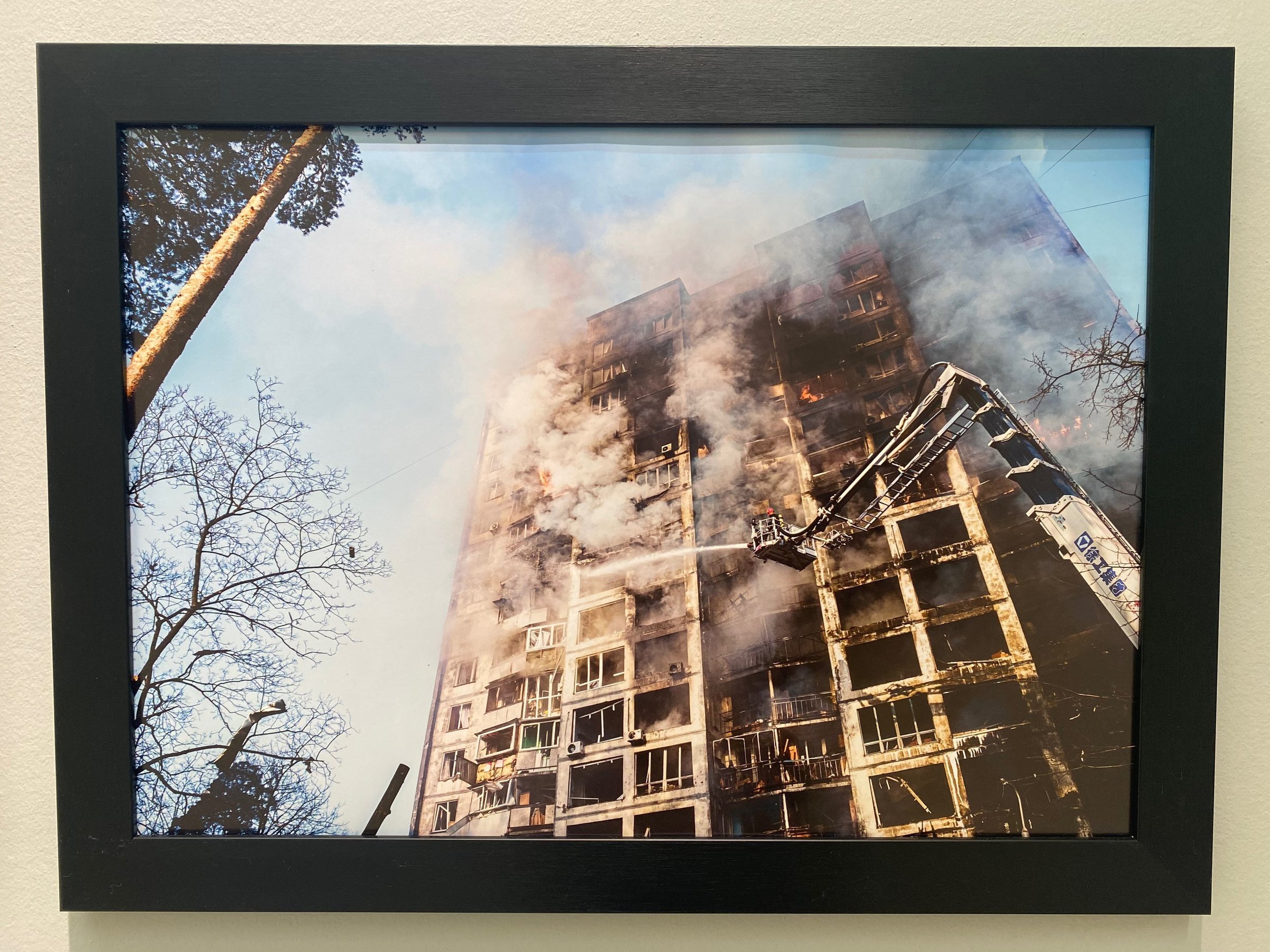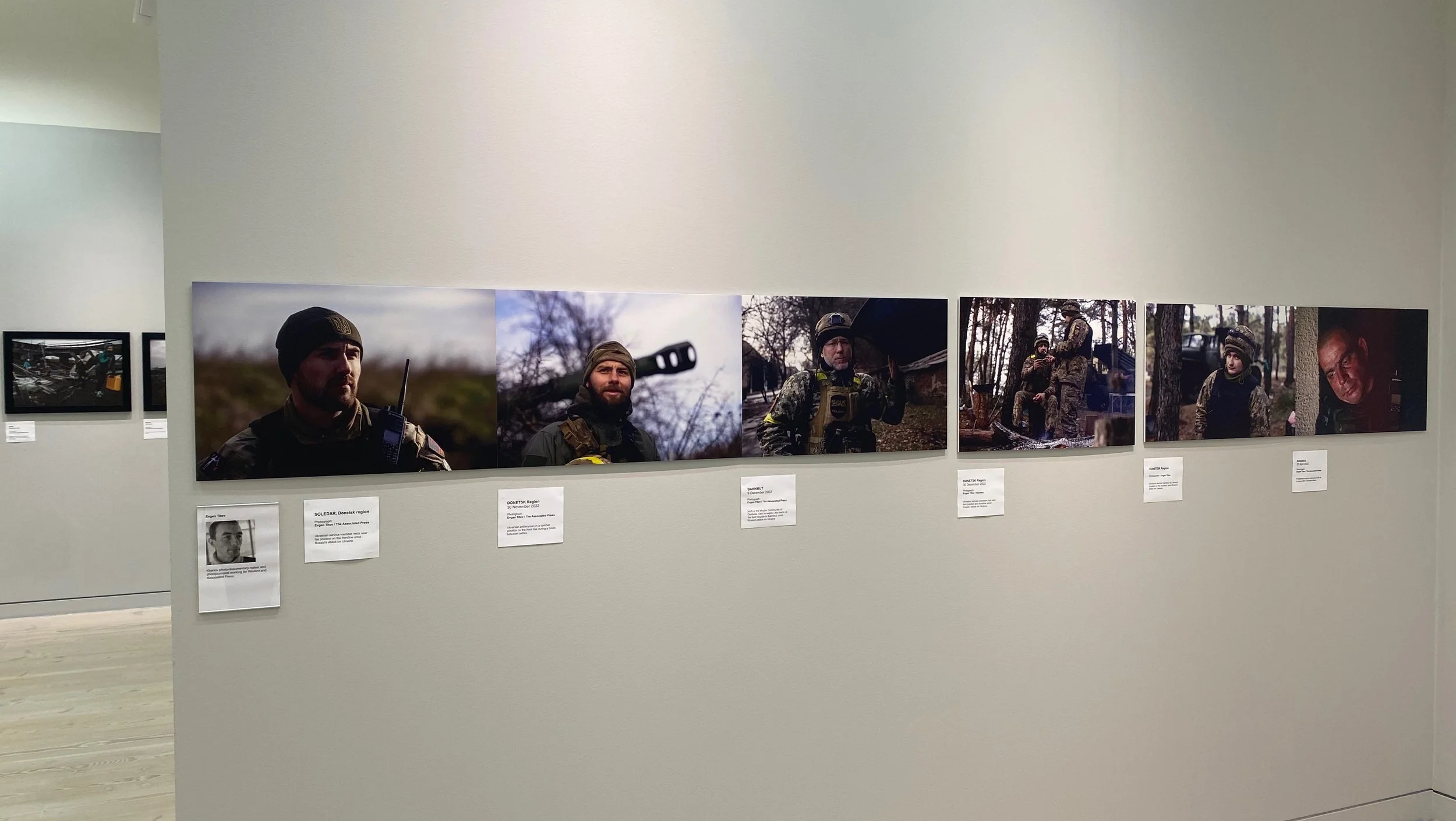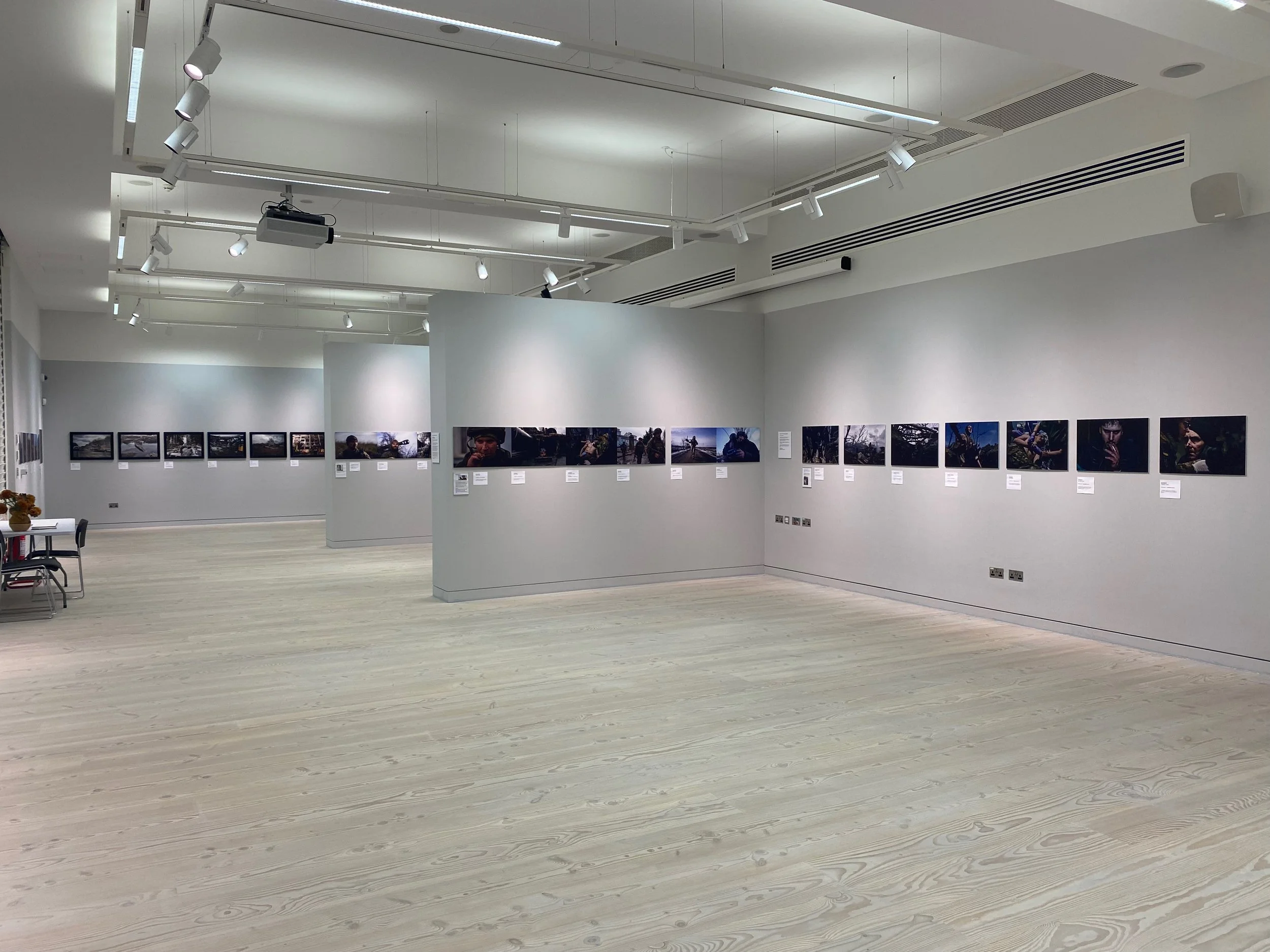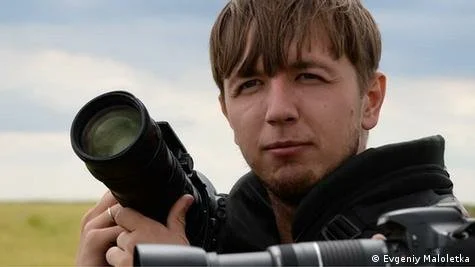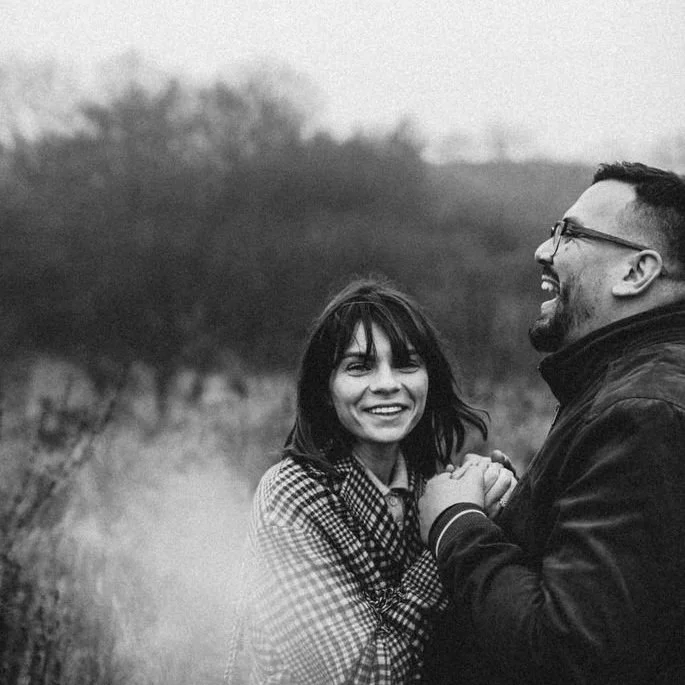‘Children hide in the night as another building crumbles, another trench is dug’
THE GRIEF OF A CHILD: Six-year-old Vlad at his mother’s grave in the courtyard of their home after she was killed by Russian soldiers. Bucha, March 2022. Picture credit: Rodrigo Abd
This Place, a column by Vicky Foster
Ukraine War: Photography exhibition, University of Hull – Review
Hanging on the wall before me is a photograph of a small boy. He reminds me of my own children; caught in a snap on a cold day, face pinched, hands sunk low in his pockets, mud and trees and a building in the background. But a closer look shows a wooden cross blurring behind him, a scattering of flowers. The sign below this picture reads: “Six-year-old Vlad at the grave of his mother, buried in the courtyard of their house. She was killed by the Russian soldiers.”
The picture is part of a major new photography exhibition featuring images of the Ukraine conflict by some of the world’s leading war photographers, which has just opened at the University of Hull. It’s situated on the ground floor of the Brynmoor Jones Library, but it feels like a very different place to the rest of the building.
ICONIC: This picture of a Ukrainian soldier basking in a beam of sunlight in a shelter in Azovstal became a symbol of the resilience of the Ukrainian defenders of Mariupol. Picture credit: Dmytro Kozatsky
Another photograph shows a mass grave; a thin, muddy trench, an ankle poking out from beneath a blue blanket, pylons stretching away above them, a block of flats in the distance. Another shows “children in the subway hiding from shelling by Russian troops”. Two of them cradle huge soft toys on their knees, one is in a buggy under a thick blanket, one is holding a plastic gun.
Another photograph shows a “windshield pierced by Russian bullets”, taken from the back seat of a car on an empty road. Every time you lift your eyes, you find another image, and another. The photos hang at a regimented height, unframed or edged simply in black.
DEVASTATION AND RESPONSE: A firefighter sprays water from a crane onto a multi-storey building after it was bombed by Russian troops. Kyiv, April 2022. Picture credit: Kostyantin Liberov
One wall shows a series of solo men, optimistically half-smiling, or pained-looking, or lighting a cigarette, or trying to smile, but not quite able, or leaning a head against a wall, unguarded, exhausted. The eyes in these pictures are impossible to ignore. You can’t walk past without stopping.
On the opposite wall, a man drinking from a mug makes a peace sign to the camera. It takes a while before you notice the metal contraption attached to his arm. The bandage. The sling.
THE FACE OF WAR: A Ukrainian soldier ‘who returned from battle with the Russian occupiers’. Bakhmut, February 2023. Picture credit: Evgen Maloletka
We’ve all seen images of the Ukraine war on TV and in newspapers, but it’s a different thing entirely to be confronted by these pictures in this room. It’s a glimpse into what it must feel like to be caught in war – every time you lift your eyes, there’s another sight to shock you. Another building crumbles, another trench is dug, another set of children hide in the night, another mother runs behind her child as he is carried, bleeding, into a hospital.
But there are also images of hope, and of helpers. There are cranes tending buildings, there are firefighters and soldiers, there are people lifting others in their arms, people watching over children gathered in the safest places they can find. They shouldn’t have to be doing these things, but they are.
In one image, a man stands, arms outstretched, caught in a blue beam of sunlight that has pierced the roof a dark shelter. The sign below reads “This photograph became famous as a symbol of the resilience of the Ukrainian defenders of Mariupil.”
It might be easy to turn off the TV when the now-familiar images of war flash up, but it’s not easy to forget these moments, captured in stark intimacy and displayed in this way. As I leave, I notice a sign on the wall that reads:
PLEASE BE AWARE. War is brutal and some of these photographs may shock and move you, and so they should. Others may inspire you.
Photographers featured in this article include:
Evgen Maloletka
Ukrainian photographer and journalist. As an employee of Associated Press, he covered the first weeks of the siege of Mariupil. His photographs of the bombed-out maternity ward of the city hospital became ‘one of the symbols of Russia’s war on Ukraine’
Awards: The Guardian Photographer of the Year 2022; Knight International Journalism Award 2022; World Press Photo of the Year 2023; Pulitzer Prize for Public Service 2023; Pulitzer Prize for Breaking News Photography 2023
Rodrigo Abd
Argentinian photojournalist
Awards: Two-time Pulitzer Prize-winner
Kostyantin and Vlada Liberov
Ukrainian documentary photographers covering Russia's war against Ukraine from the front line
The exhibition was curated by John Bernasconi, director of the University of Hull Art Collection; journalist and editor Olena Hatton; and Alec Gill, author, historian and film-maker.
The exhibition is open daily until September 2
Become a Patron of The Hull Story. For just £2.50 a month you can help support this independent journalism project dedicated to Hull. Find out more here




